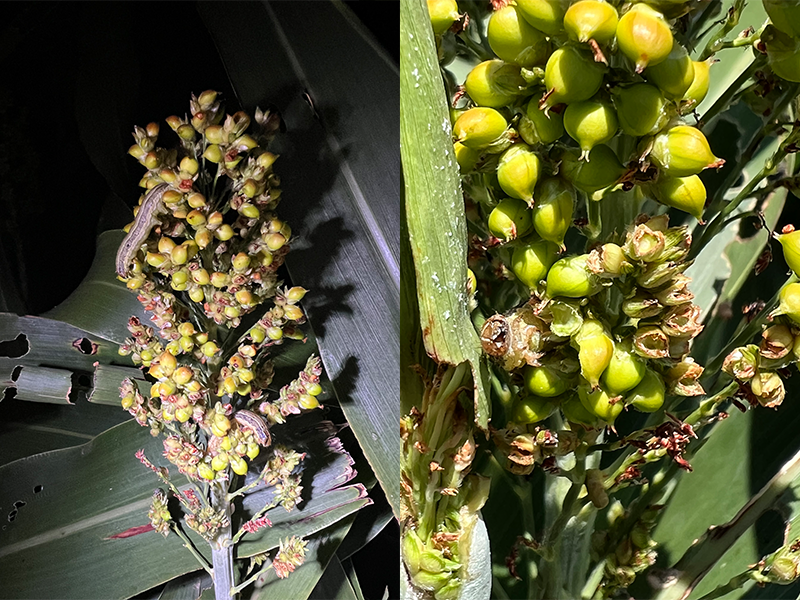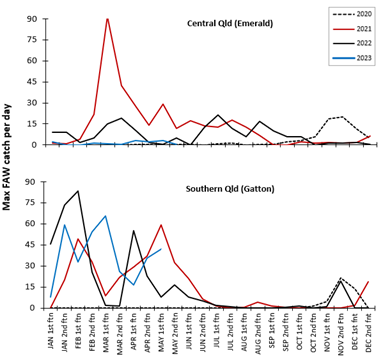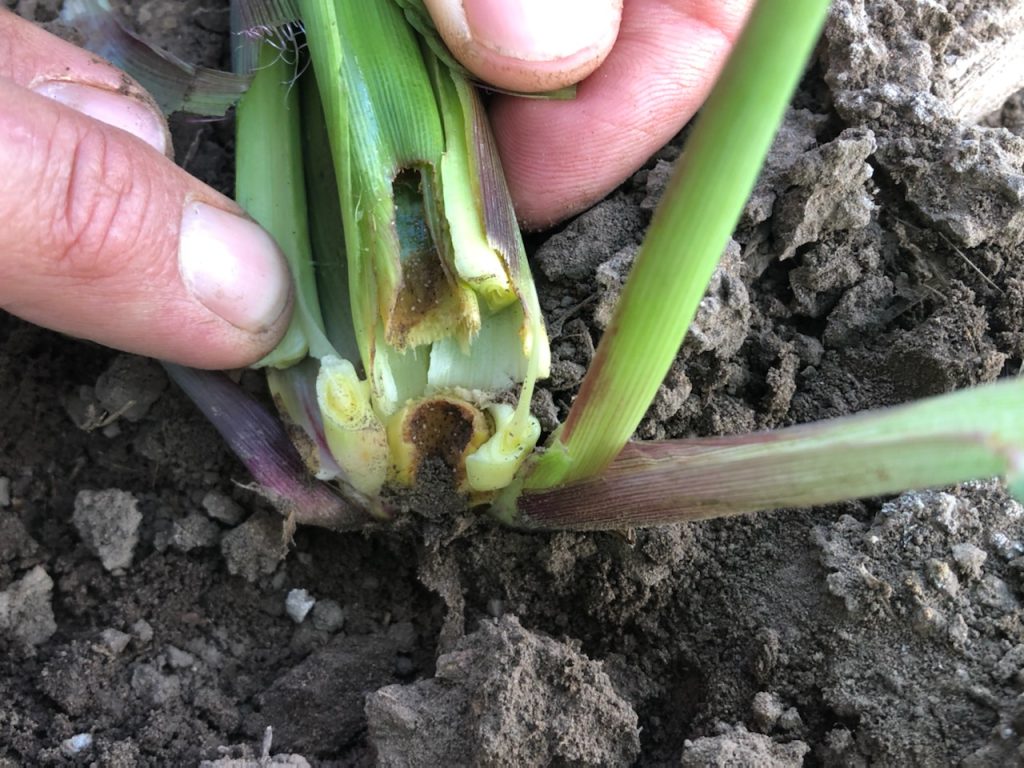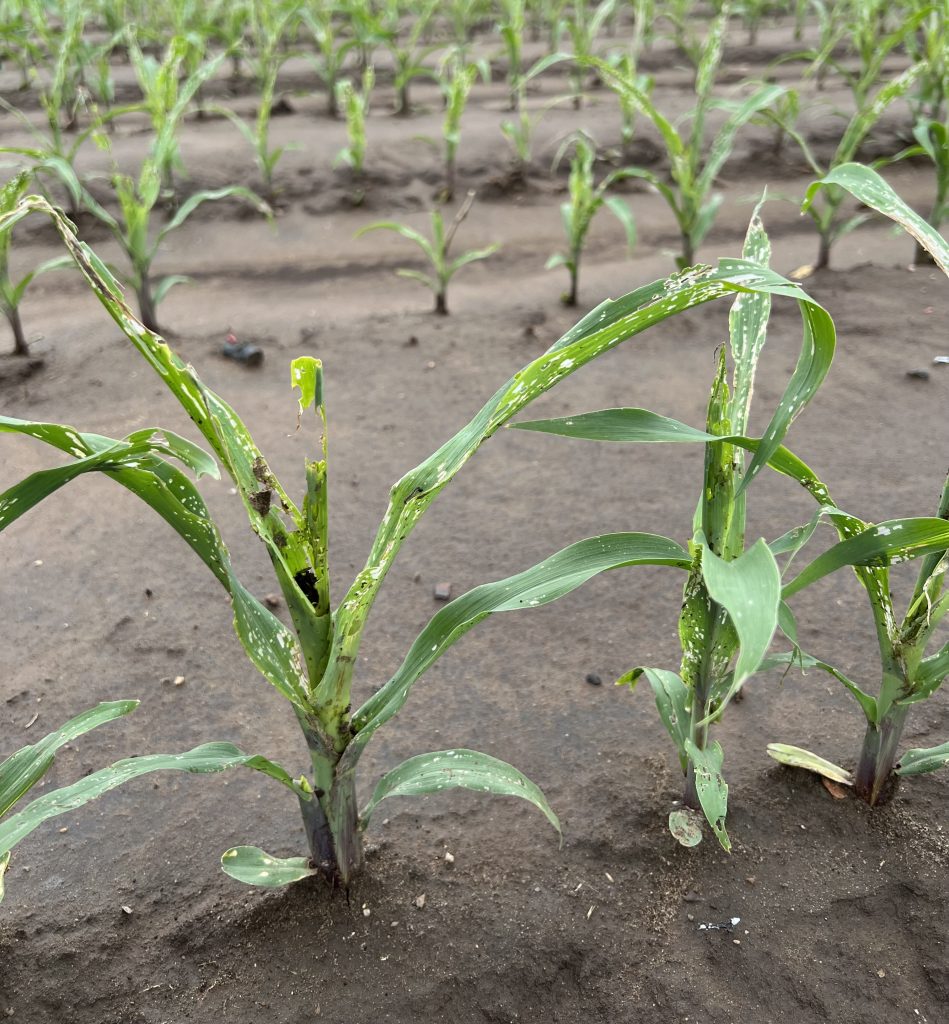Maize and sorghum crops across Queensland are experiencing extreme fall armyworm (FAW) pressure. In Central Queensland in particular, sorghum planted in the typical planting window has been heavily impacted by the very high FAW pressure.
Persistent, high-density infestations pose a risk to crops from emergence through to grain fill. In an unwelcome development not observed in previous seasons, large FAW are feeding on sorghum heads from flowering to maturity. In corn, even crops where FAW have been well managed through the vegetative stage are seeing infestations establishing in cobs from silking to maturity.

Unlike in previous years, this season large larvae are damaging developing grain
The precise drivers of this outbreak are unclear, but likely contributing factors include:
- An early start to the FAW season has meant that additional generations have had time to cycle, compared with the previous two years. Each generation of a pest contributes to population build-up, so the early start has led to higher numbers during the traditional cropping season.
- In some regions, field conditions made planting difficult, so there are large areas of late planted crop, where the susceptible vegetative stages are exposed to this high FAW activity. In the previous two years, most sorghum and maize crops were reproductive and much less attractive to FAW in January – February.
During 2020-2023, pheromone trap monitoring indicates that FAW moth activity normally peaks in late summer, although in some production areas, moths continue to be caught throughout autumn.

Example of pheromone trap results for 2020-2023 seasons
A recent Beatsheet article (https://thebeatsheet.com.au/managing-faw-in-sorghum-is-there-a-threshold-yet/) discussed the preliminary outcomes from the threshold trials (QDAF, UQ) and the complexity of the interactions between crop and FAW.
Given there are crops of varying ages currently being infested by FAW, the key considerations when assessing infestations and making decisions are:
- FAW pressure is higher in crops than in the previous two seasons. The likelihood of crop loss if infestations are left untreated is high.
- Up to 5 leaves, plants can be killed by large FAW larvae feeding at the base of plants. The presence of medium and large larvae in plants 5 leaf or younger is a risk.
- Prolonged infestations (for 2 weeks or longer) where 1+ large larvae feeding in the whorl prevents the production or full expansion of leaves is likely to result in yield loss.
- It is critical that FAW infestations are assessed by destructive sampling. Decisions on the need to treat a crop cannot be made by just observing damage. You need to:
- Randomly select plants to assess the proportion of the crop infested – do not just look at the damaged plants.
- Determine the number and size of larvae to determine if the infestation will continue to cause damage (i.e. if there are small – medium larvae still present).
- Pay particular attention in post-treatment assessments (4-6 days post-spray) to the number of medium and large larvae, as small larvae may still be controlled by spray residues. Post spray you may also see increased egg pressure on new leaves, however the survival of very small larvae is low, and weekly assessments are adequate to determine if larvae are establishing and pose a risk to the crop.

Young plants can be killed by large FAW feeding at the base

Prolonged FAW damage to developing leaves is likely to result in yield loss
The DARABUG model (https://thebeatsheet.com.au/darabug/) is useful for getting an idea of the rate of larval development. The table below (run for Emerald and Dalby for mid February temperatures) provides a guide to the number of days that larvae take to complete each instar.
Table 1. Days taken for FAW life stages to develop during mid-February
| Dalby | Emerald | ||
|---|---|---|---|
| egg | 2.6 | 2.3 | |
| L1 | 2.6 | 2.3 | |
| L2 | 1.9 | 1.7 | |
| larval | L3 | 1.6 | 1.5 |
| stage | L4 | 1.8 | 1.6 |
| L5 | 2.4 | 2.0 | |
| L6 | 2.7 | 2.3 | |
| pupa | 11.0 | 10.4 | |

Some reports of FAW eggs being laid in mungbeans and soybeans, small larvae hatching but not progressing. Large FAW larvae reported damaging establishing mungbeans where there are volunteer corn/sorghum that host the larvae to late larval stage. Movement of larvae associated with host plants dying (e.g. herbicide). Other reports of non-persistent infestations where mungbeans/soybeans are adjacent to maize or forage sorghum that are infested. Neonate larvae will balloon to neighbouring crops, and large larvae can walk.
FAW are active at night. Scouting at night might improve detection, particularly of medium-large larvae that may be less visible in plants or soil during the day. They are cannibalistic.
No record of FAW damaging sunflower in Australia to date. Suspect that proximity to source crops could result in infestation, unclear whether these infestations will persist and cause yield impact. I’ll check for overseas info and get back to you.
Afternoon team , these damn FAW are giving us heaps of concerns and extra growing costs in maize , grain sorghum and some millet crops. Not heard one report of FAW eating mungs or soys . Is this correct.
Does anyone know of FAW propensity for damaging/eating sunflowers please.?
And are these beggars more visible and active at night and therefore give more accuracy in larval counts and size if scouting then ?. . Do they also eat each other like Helicoverpa do ?.